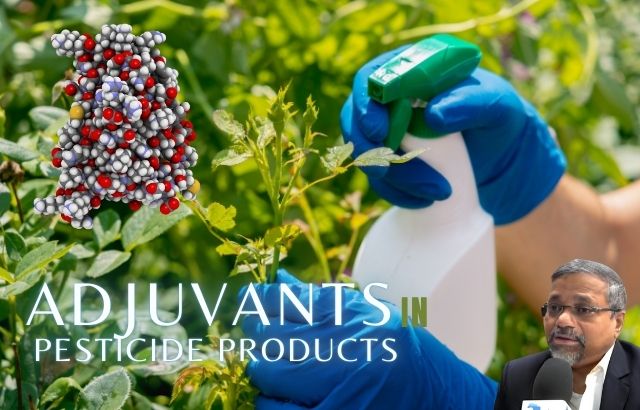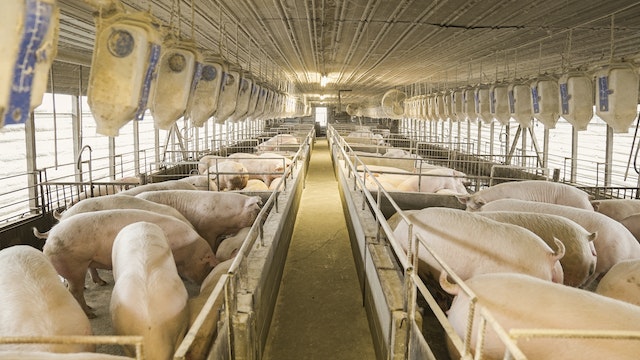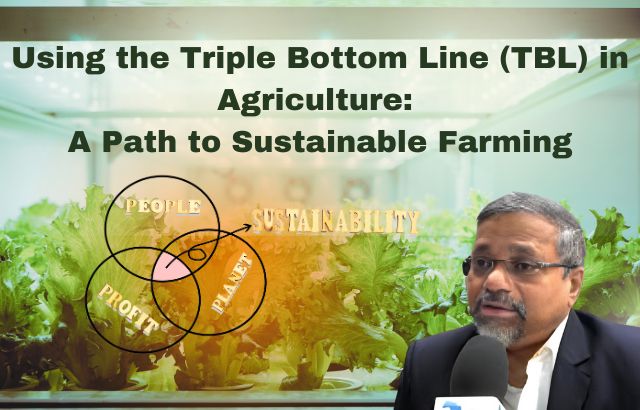The world is rapidly shifting towards sustainability, and as we do, the realm of innovation is thriving in eco-friendly ways. In the agricultural sector, the role of green innovators is pivotal in shaping a future where technology and nature align to create cleaner, more sustainable practices. One such innovator, Jaiguru Kadam, has pioneered green innovations that are revolutionizing agriculture and giving businesses a way to profit while promoting environmental wellness.
This blog explores the incredible potential for growth, success, and profit through green innovations such as green solvents, surfactants, plant-derived herbicides, and green herbicide safeners. These innovations not only enhance agricultural efficiency but also align with the global push towards sustainability.
The Role of a Green Innovator
A Green Innovator is someone who designs and promotes solutions that are sustainable, eco-friendly, and often designed to reduce the environmental impact of existing processes. These innovators are at the cutting edge of technology and often bridge the gap between profit generation and environmental preservation.
Jaiguru Kadam, an agricultural green innovator, is a perfect example. His focus has been on developing eco-friendly solutions that make agriculture more sustainable while offering businesses new opportunities for revenue growth. His work has been instrumental in driving the adoption of green solvents and plant-derived herbicides, providing powerful, safe alternatives to traditional chemicals.
Green Innovation Examples
Let’s explore a few key examples in the world of green innovation:
1. Green Solvents
Green solvents are environmentally friendly alternatives to traditional solvents that are often toxic, volatile, and harmful to both human health and the environment. These solvents are biodegradable, derived from renewable resources, and offer a safer option for various agricultural processes.
For example, Jaiguru Kadam’s development of green solvents made from plant-based sources has replaced harmful petrochemical solvents used in pesticide formulations. These solvents are not only safer for the environment but also provide cost-effective solutions that reduce the dependency on synthetic chemicals.
Business Potential: Manufacturers using green solvents have seen reduced liability costs associated with hazardous chemical exposure, while benefiting from improved marketability by tapping into the rising demand for eco-friendly products.
2. Green Surfactants/Adjuvants
Surfactants and adjuvants are essential ingredients in agricultural chemicals, helping to enhance the effectiveness of herbicides, pesticides, and fertilizers. However, many conventional surfactants are made from petrochemicals, which can be harmful to the environment.
Green surfactants, on the other hand, are derived from renewable sources like plant oils and sugars. These surfactants reduce the environmental footprint and provide enhanced efficiency in agricultural formulations. Green adjuvants increase the effectiveness of plant treatments, boosting crop yields and providing long-term growth opportunities.
Example: Jaiguru Kadam’s eco-friendly surfactants allow farmers to apply pesticides more efficiently, reducing chemical runoff and increasing crop protection. This reduces the overall usage of chemicals, lowering costs for farmers while ensuring healthier crops.
3. Plant-Derived Herbicides/Green Herbicides/Bioherbicides
Traditional herbicides often contain toxic chemicals that harm the environment and pose health risks to humans. Green herbicides, such as plant-derived herbicides, provide an effective alternative that is less harmful to the environment.
Jaiguru Kadam has introduced a plant-derived herbicide that is biodegradable and poses little to no risk to wildlife, soil, and water sources. This bioherbicide is derived from natural plant extracts, offering a non-toxic solution for controlling weeds without the harmful effects of synthetic herbicides.
Impact on Growth and Profit: By implementing plant-derived herbicides, farmers reduce costs associated with chemical herbicides, improve soil health, and contribute to a sustainable future—all while ensuring their crops remain protected.
4. Green Herbicide Safeners
Green herbicide safeners are chemicals used alongside herbicides to protect crops from herbicide injury while still effectively managing weeds. These safeners are typically derived from natural sources and are non-toxic to the environment.
A great example is the introduction of Jaiguru Kadam’s Green Herbicide Safeners, which allow farmers to use less toxic herbicides while still offering effective weed control. These safeners help to protect the environment and ensure the long-term health of soil and water.
Economic Benefits: By reducing herbicide damage to crops, farmers can increase their yields and reduce their input costs, leading to a more profitable operation.
Engaging insights by Jaiguru

-
Green Solvents: Studies show that the market for green solvents is expected to grow at a CAGR of 7.5% between 2021 and 2028, driven by the increasing demand for eco-friendly and sustainable agricultural products.
-
Plant-Derived Herbicides: According to a report by MarketsandMarkets, the global market for bioherbicides is expected to reach $7.2 billion by 2025, driven by a growing trend toward sustainable agriculture.
-
Sustainability: According to the United Nations, sustainable agriculture could increase global food production by up to 30%, addressing both food security and environmental concerns.
Ask Jaiguru about How Green Innovation Can Drive Your Success and Growth

1. What are green solvents? Green solvents are chemicals used in industrial applications that are non-toxic, biodegradable, and derived from renewable resources. They serve as a safer alternative to petrochemical-based solvents.
2. Why are plant-derived herbicides important? Plant-derived herbicides offer a non-toxic alternative to traditional herbicides, reducing the environmental impact, improving soil health, and providing safer options for farmers and consumers.
3. How do green surfactants benefit agriculture? Green surfactants improve the effectiveness of agricultural chemicals, such as pesticides and fertilizers, while being derived from renewable resources. This reduces the environmental impact and improves agricultural efficiency.
4. What are green herbicide safeners? Green herbicide safeners are compounds that protect crops from herbicide damage while maintaining the effectiveness of the herbicide in weed control. They are typically plant-based and non-toxic to the environment.
5. Can adopting green innovations lead to increased profits? Yes, adopting green innovations can reduce production costs, improve efficiency, and enhance marketability by appealing to environmentally conscious consumers. Moreover, they often reduce liability related to harmful chemicals and improve crop yields.
Calculations by Agriculture Green Innovator Jaiguru Kadam

Example Calculation for Green Herbicides:
Let’s say a traditional herbicide costs $50 per hectare and requires 4 liters per hectare to cover a field. The total cost for one hectare would be:
Cost = 50 x 4 = $200 per hectare.
In contrast, a plant-derived bioherbicide developed by Jaiguru Kadam costs $40 per hectare and only requires 3 liters per hectare. The total cost for one hectare would be:
Cost = 40 x 3 = $120 per hectare.
Cost Saving:
Traditional Herbicide: $200
Green Bioherbicide: $120
Savings per hectare: $80
If a farm operates on 500 hectares, the savings would be:
500 hectares x $80 = $40,000 in savings.
This calculation illustrates how green innovations can significantly reduce operating costs, making them an attractive option for farmers looking to increase profitability while protecting the environment.
In conclusion, integrating green innovations into agriculture is not only beneficial for the environment but can also unlock significant financial potential. By adopting green solvents, surfactants, plant-derived herbicides, and safeners, agricultural businesses can achieve sustainable growth, reduce costs, and tap into the rising demand for eco-friendly products. The future of agriculture is green, and innovators like Jaiguru Kadam are paving the way to a more prosperous and sustainable tomorrow.











